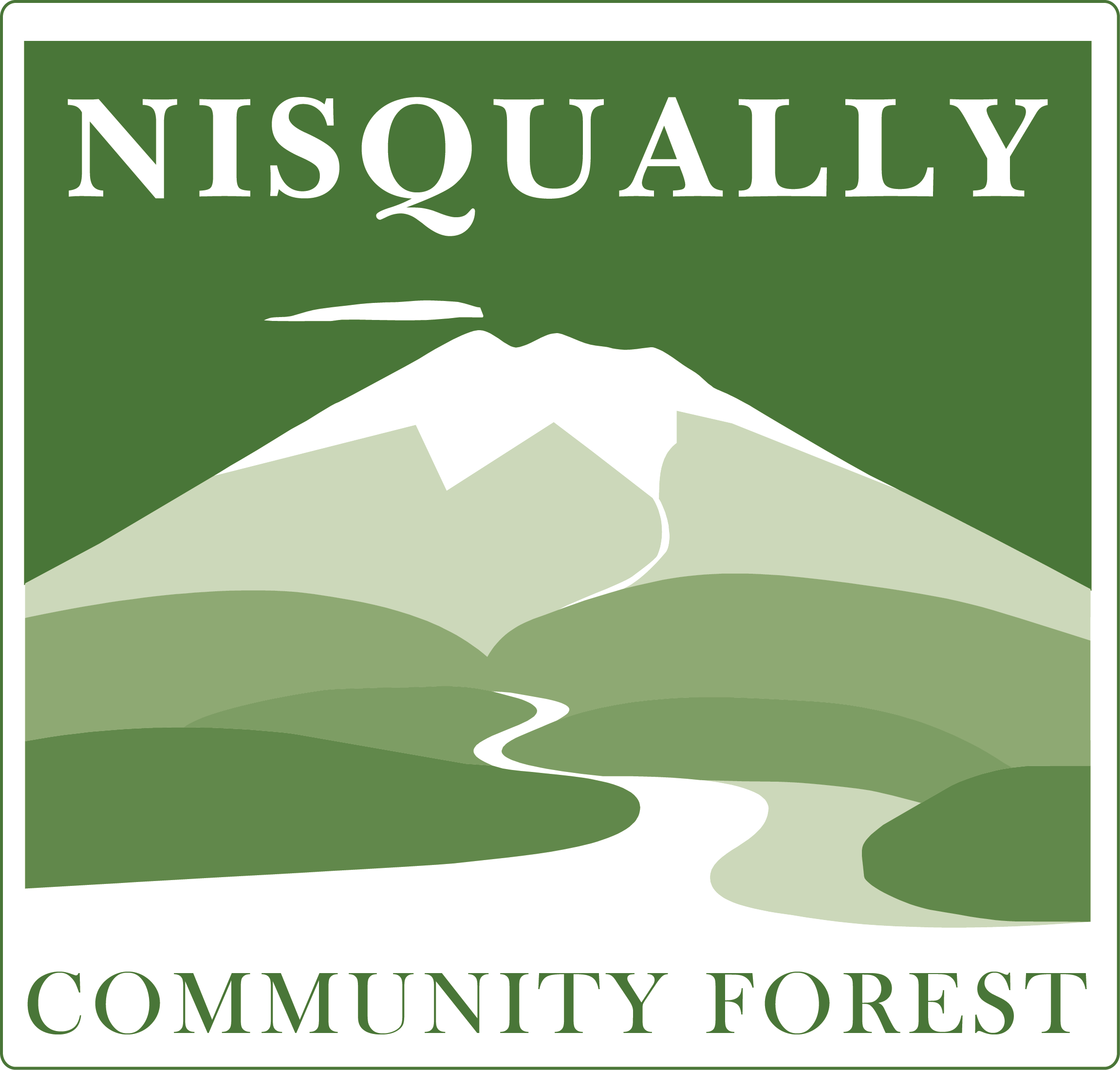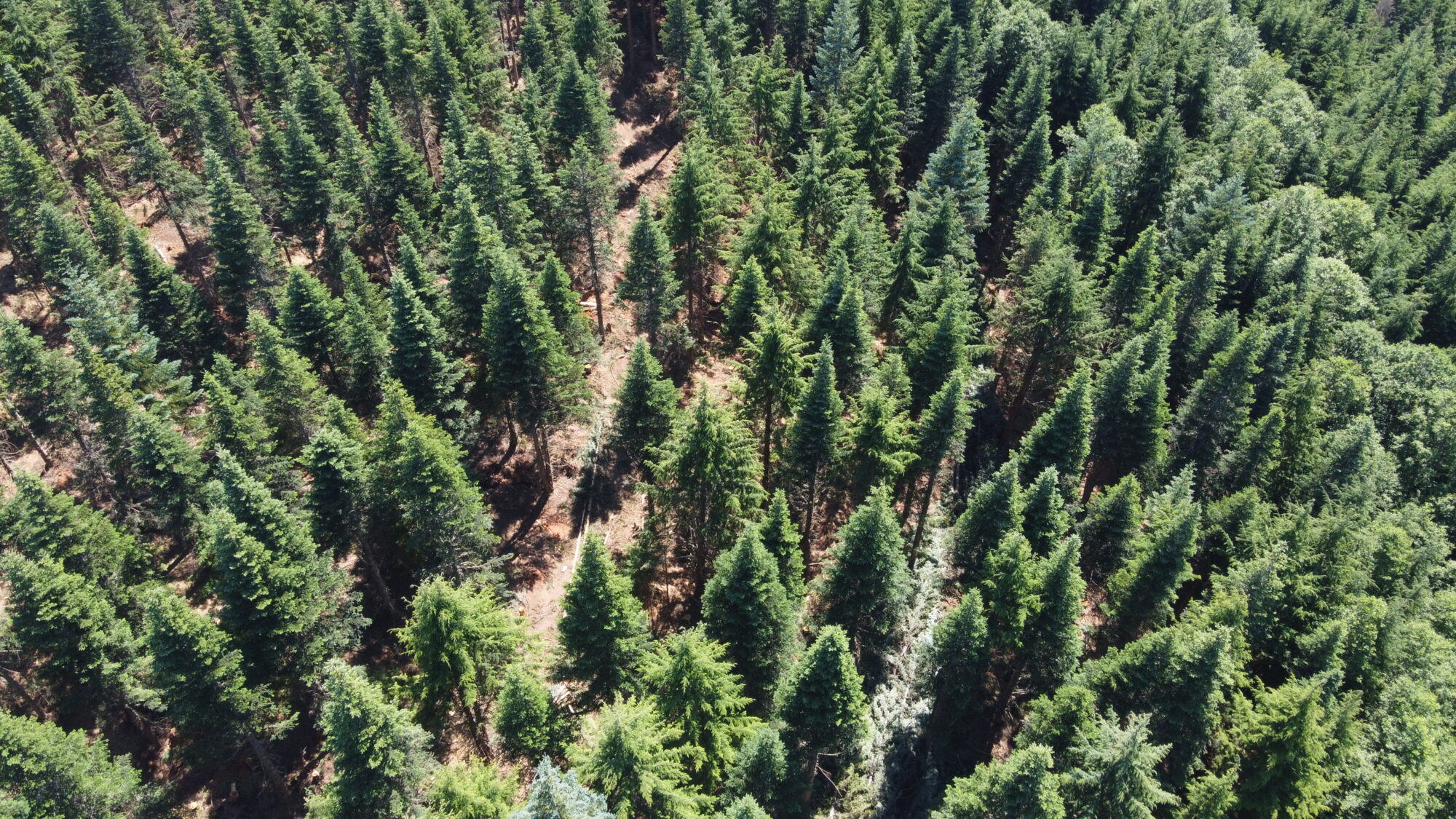Nisqually Community Forest currently owns 2,880 acres of timberlands in Pierce County, Washington, along Busy Wild Creek, the headwater basin of the Mashel River – in turn, the primary tributary to the Nisqually River – and manages another 2,580 acres in partnership with the Nisqually Indian Tribe. We manage these timberlands to provide environmental, economic, and social benefits to the larger Nisqually Watershed community through a series of programs:
Salmon Recovery
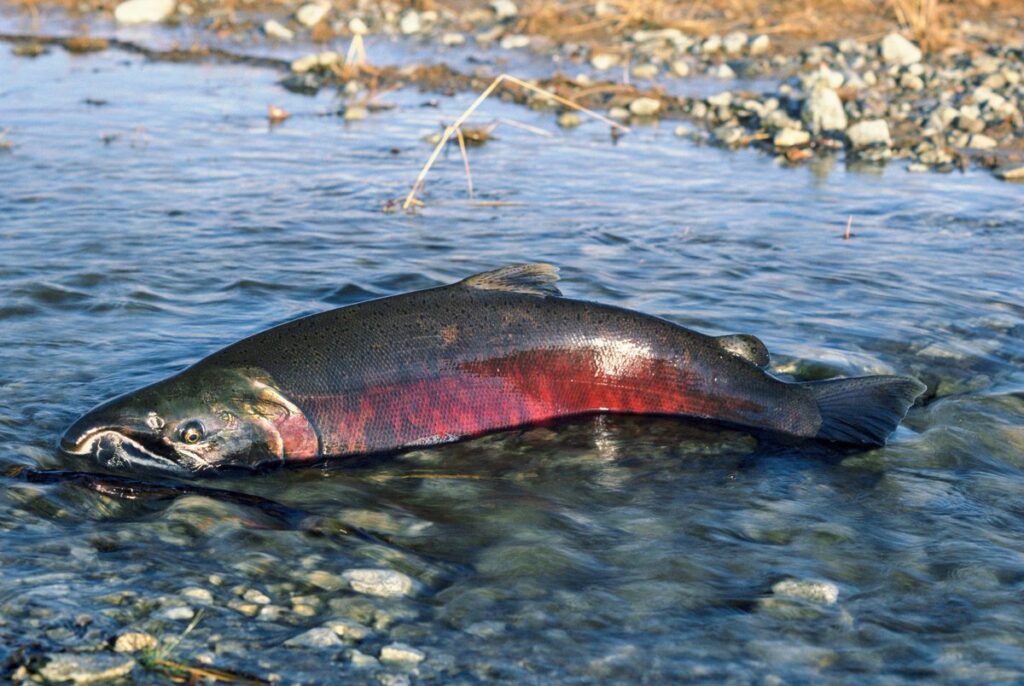
NCF works closely with the Nisqually Indian Tribe and state and federal resource agencies to manage over nine miles of Busy Wild Creek shoreline for the recovery of Chinook salmon and steelhead trout. Both species are listed as threatened under the Endangered Species Act and are considered to be on the verge of extinction. Protection and restoration of Busy Wild Creek is rated a highest priority under the Nisqually Chinook salmon and steelhead trout recovery plans.
Ecological Forestry & Local Jobs
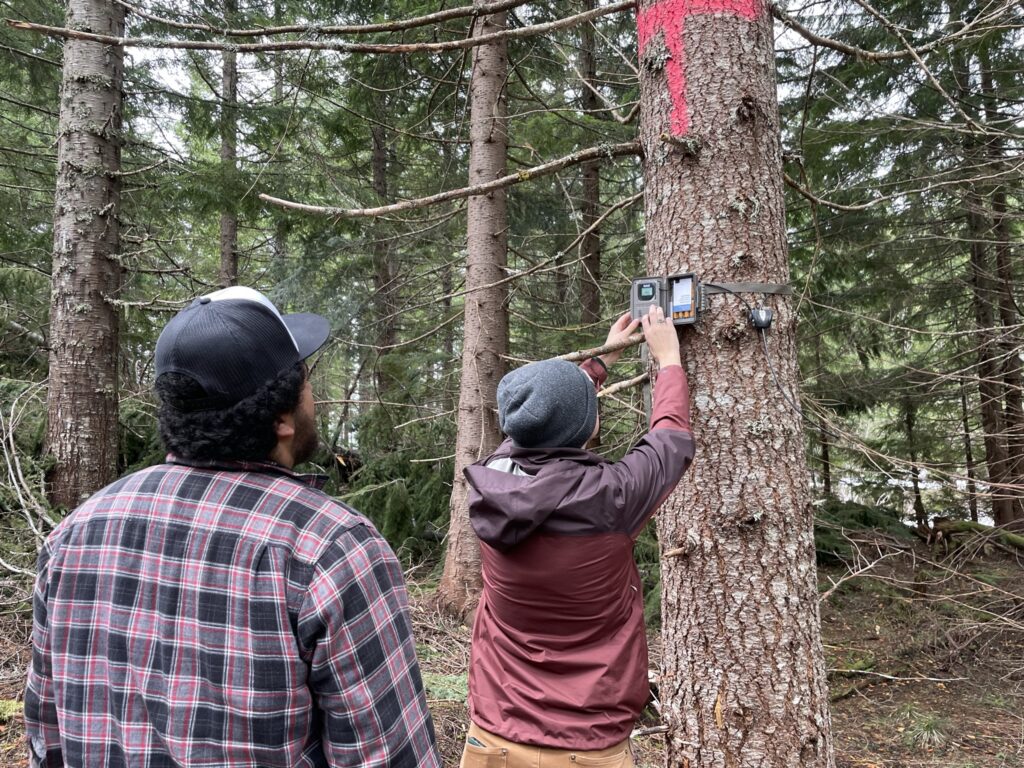
The Busy Wild Creek sub-basin is in a state of recovery from decades of clear-cut logging operations that have caused long-term damage to critical salmon habitat and contributed to a dramatic decline in native salmonid populations. This has only accelerated in the last fifteen years, as demand for domestic and export timber increased exponentially.
NCF is addressing these concerns by robustly changing prevailing land-management strategies for commercial forestlands through a program of “ecologically forestry” designed to restore forest health: thinning overcrowded and stunted plantation stocking; increasing the diversity and abundance of native trees and understory species; increasing stand age; and increasing stream buffers and protection on unstable slopes.
Managing the forest in this manner will, over time, return the property more closely to the structure of an intact native forest, with an ecosystem that:
- Is highly resilient to, and can recover quickly from, natural disturbance regimes
- Has an increased capacity for stormwater retention
- Optimizes the sequestration and long-term storage of carbon
- Provides a broad spectrum of habitat niches
- Produces multiple forest commodities
- Supplies recreational and hunting opportunities for local communities
By design, NCF timber harvest consists of annual thinning, assuring steady work and production over the long term and supporting local family-wage forestry jobs for the entirety of the harvest season. In addition, almost every log harvested on NCF land has been sold to local mills, supporting further local employment, and local contractors have performed all roadwork, including abandonment and restoration of old and unused logging roads.
Outreach & Education
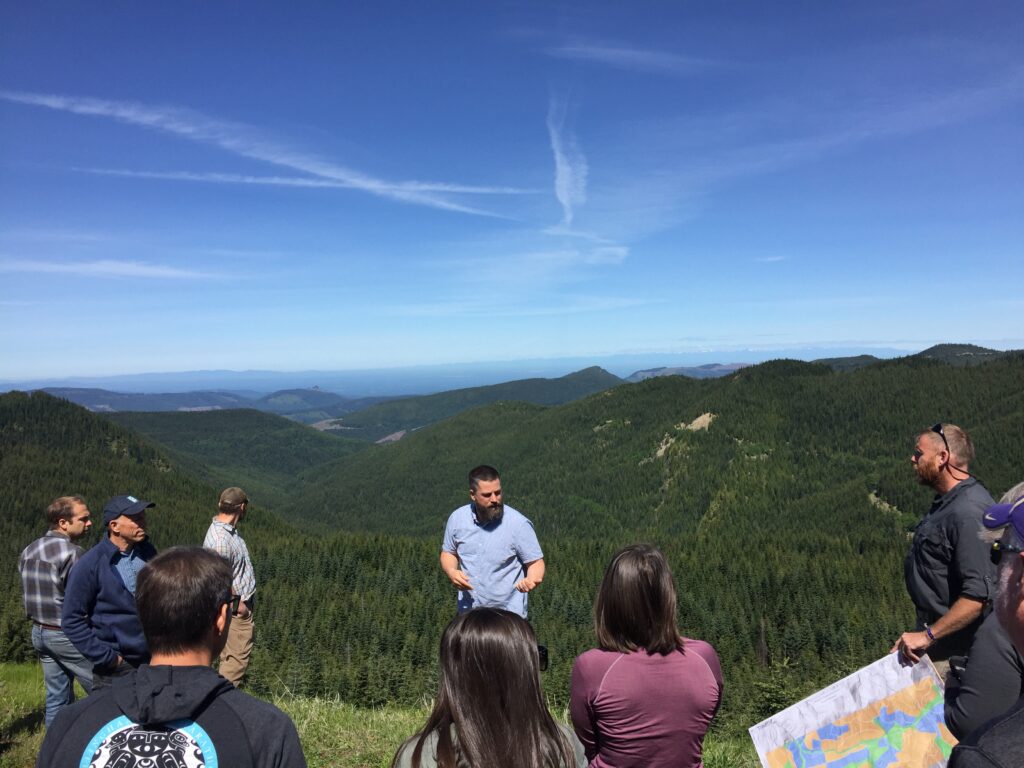
NCF supports environmental education and scientific research through a demonstration forest, pilot projects, site visits, and webinars for elected officials, forestry professionals, small-forest landowners, and students from kindergarten through graduate school.
Tours and site visits for elected officials, forestry professionals, small-forest landowners, local residents, and potential supporters will begin again in 2023. These tours are designed to show how NCF manages its forests; pass on knowledge gained through experience; and build public support for the project.
The Northwest Natural Resource Group (NNRG) has installed a network of permanent plots in Nisqually Community Forest to document its transition from industrial to ecological forest management. This data will form the baseline for projection and eventual re-measurement of carbon accumulation in the forest as a result of improved stewardship. NNRG and NCF will also produce interpretive materials and open the demonstration forest to the public.
Recreation
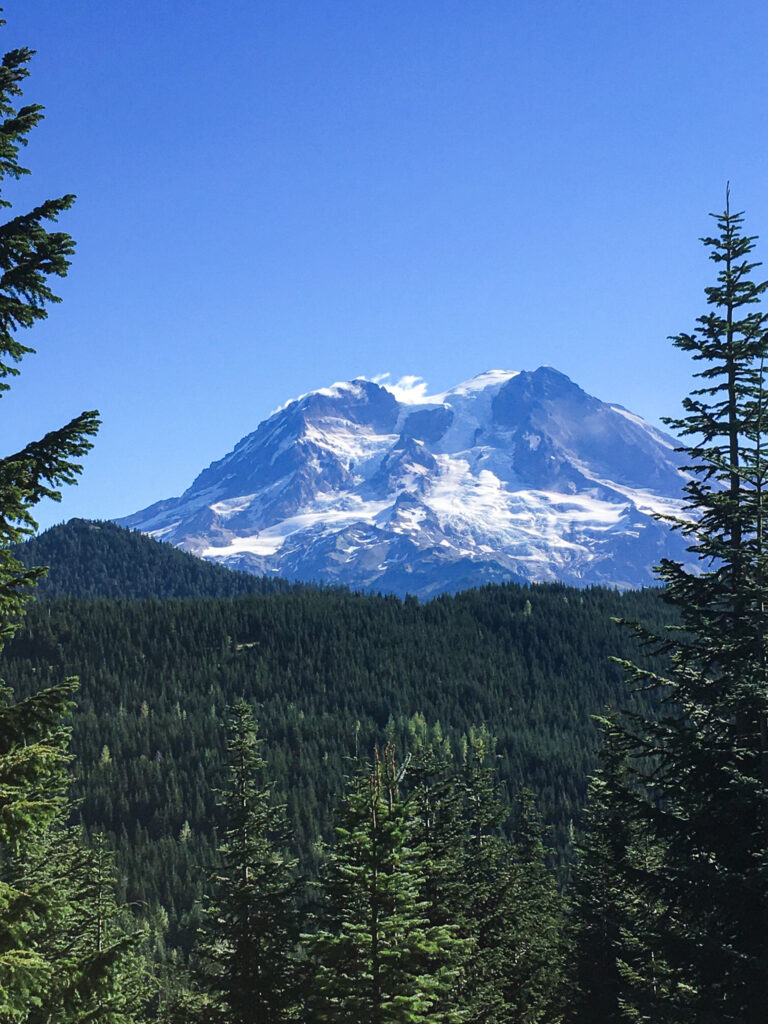
NCF hosts the most popular section of the Mount Tahoma Trails Association’s (MTTA) cross-country ski trail, the largest no-fee hut-to-hut trail in the U.S. The MTTA trail system is used by over 5,000 visitors annually and is an economic driver for the local community. We are coordinating with MTTA to add a new hut on our property and to further extend the trail.
NCF’s extensive network of logging roads also holds significant potential for mountain-biking. We are now working with a consortium of local partners – including the Mount Rainier Business Alliance, ForeverGreen Trails, the Evergreen Mountain Biking Alliance, and the Washington Department of Natural Resources – to study the feasibility of creating a trail network in the Upper Nisqually Watershed centered around the community of Ashford and potentially connecting with the Town of Eatonville and its popular Bud Blancher trail, which features the first bike and pedestrian bridge over the Mashel River and in turn connects to 40 miles of trails in the University of Washington’s Pack Forest.
Research
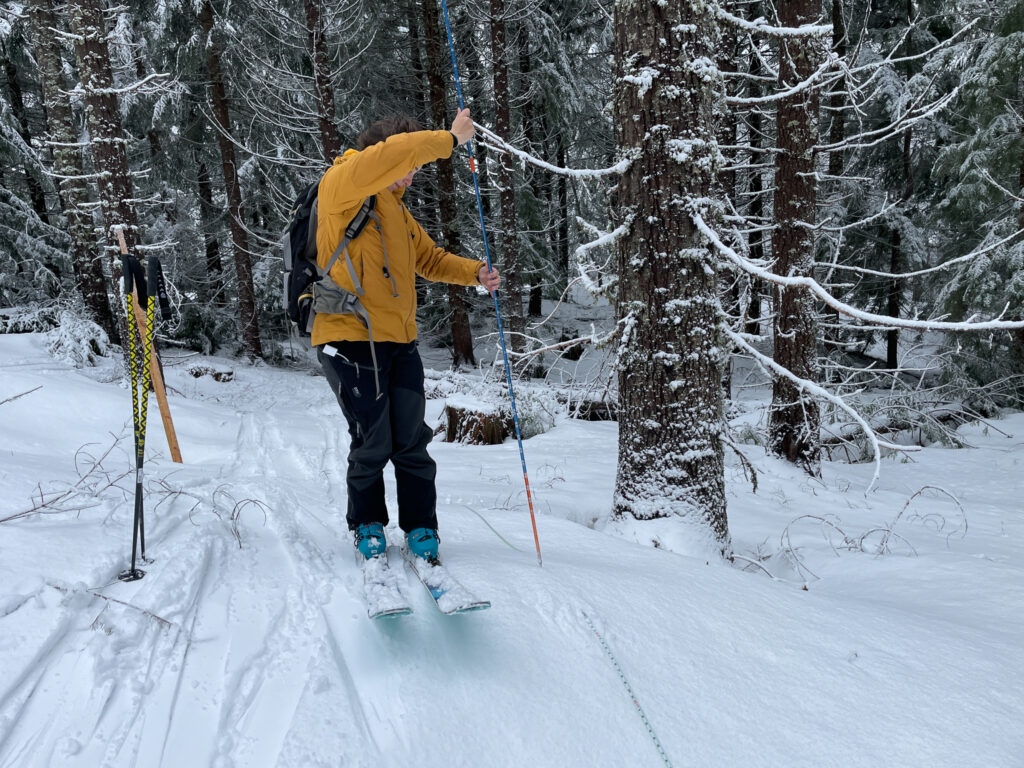
Northwest Natural Resource Group (NNRG), with grant funding from the Wildlife Conservation Society, is conducting a two-year climate-adaptation pilot project on NCF lands to explore ways that timber management can increase the amount and duration of snow retention on the forest floor, and hence enhance long-term soil moisture and streamflow in the face of climate change. This includes planting several thousand native trees. NNRG recently completed a video about the project, which you can view here.
